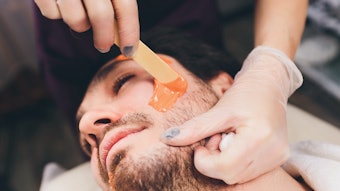
Doing a little detective work can go a long way in finding skin cancer, the most common form of cancer diagnosed in the United States, at its earliest, most treatable stage. However, a new survey found that many people do not know how to spot skin cancer and are unaware of their risk of developing the disease.
In an effort to increase the public’s understanding of skin cancer and motivate people to change their behavior to prevent and detect skin cancer, the American Academy of Dermatology (Academy) launched the new SPOT Skin Cancer public awareness initiative this week. The campaign’s simple tagline—“Prevent. Detect. Live.”—focuses on the positive actions people can take to protect themselves from skin cancer, including seeing a skin care professional when appropriate.
“Unlike other types of cancer that can’t be seen by the naked eye, skin cancer shows obvious signs on the surface of the skin that can be easily detected by properly examining it,” said board-certified dermatologist Daniel M. Siegel, MD, FAAD, president, American Academy of Dermatology. “The goal of SPOT Skin Cancer is to help save lives by educating the public on how to protect themselves from the sun and how to examine their skin for suspicious spots.”
Survey statistics
The need for a comprehensive skin cancer resource is evident based on the public’s general lack of understanding of detecting and preventing skin cancer. In fact, the Academy conducted an online survey of adults nationwide that showed:
- Almost three-quarters of respondents (74%) did not know that skin cancer is the most common form of cancer in the U.S.
- Only half (53%) of respondents knew how to examine their skin for signs of skin cancer.
- Thirty percent of respondents were either unsure or did not know that skin cancer can be easily treated when caught early.
“When it comes to skin cancer, our survey demonstrates that knowledge is power,” says Siegel. “For example, respondents who know how to examine their skin for signs of skin cancer were more than twice as likely to have shown suspicious moles or spots to a medical professional as those who did not know how to spot the warning signs of skin cancer on their skin. In some instances, this knowledge can mean the difference between life and death, which is why it is so important to see a dermatologist if you notice a spot on your skin that is changing, itching or bleeding.”
Skin cancer facts
- More than 3.5 million skin cancer cases affecting 2 million people are diagnosed annually.
- Current estimates are that one in five Americans will be diagnosed with skin cancer in their lifetime.
- The five-year survival rate for people whose melanoma (the deadliest form of skin cancer) is detected and treated before it spreads to the lymph nodes is 98%.
Visit (and recommend that your clients visit) the SPOT Skin Cancer program’s new website—www.spotskincancer.org—where visitors can learn how to perform a skin self-exam, download a body mole map for tracking changes in your skin and find free skin cancer screenings in their area. Those affected by skin cancer also will be able to share their story via the website and download free materials to educate others in their community.










